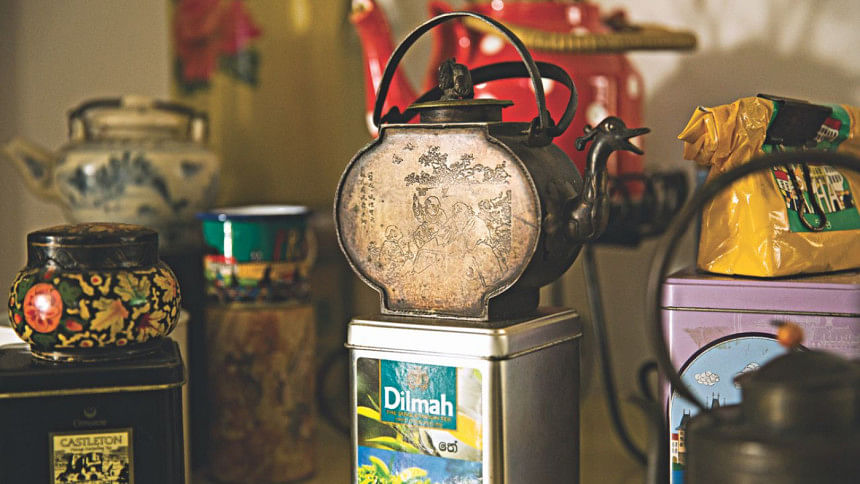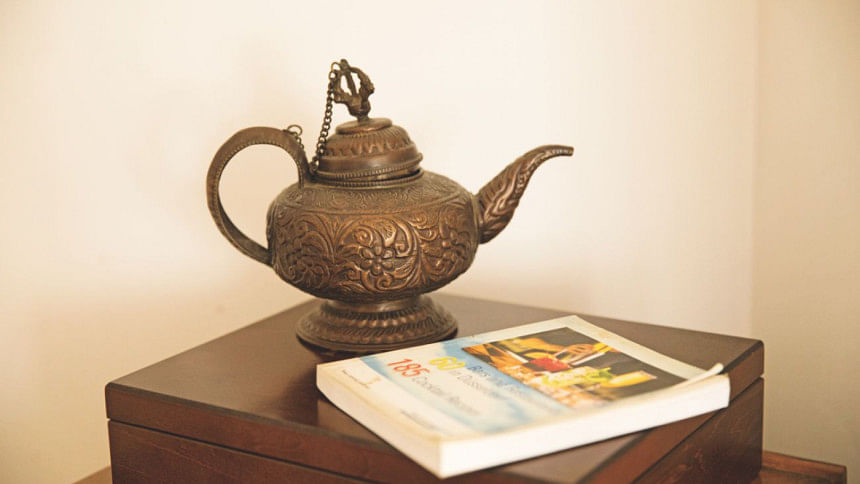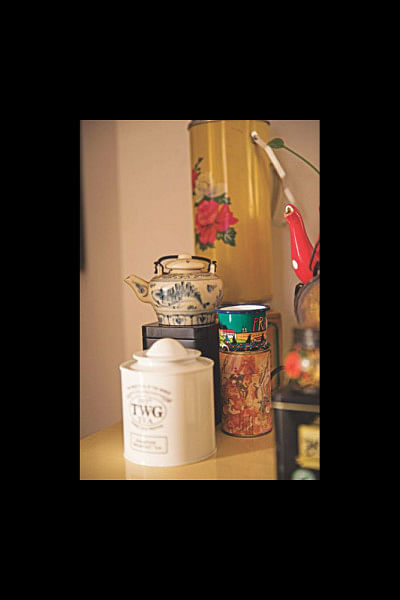The wonder between spout and handle

It is next to impossible to find anyone who has not heard the nursery rhyme "I'm a little teapot, short and stout…"! Ceramic or metal, whatever it is made out of, it is another impossibility to find someone who is not familiar with the teapot or the kettle. But of course, the differences between the two are distinct.
Did you think that the kettle is for making tea only? Scratch that out, it is only for boiling water! The kettle has come a long way in terms of a culinary utensil. Stovetop kettles are probably the oldest cooking utensil still used today. The earliest known example was made in Mesopotamia between 3500 and 2000 BC!
Early kettles were made of iron and by the 19th century copper was a commonly used material. Compared to those, the sleek, electronic, easy water boilers of modern times are marvels that come with timers and measuring windows.
The teapot, however, is just for brewing tea. There is no need to put this dainty thing on a stove, just pour in hot water and wait for the brew. And while you are waiting, marvel at the quality minute decorations, or the sheen of the porcelain. You can make tea in a kettle on a stove top and pour it into cups or mugs. But a teapot can only withstand the heat from a tea light (a dainty candle made only for keeping tea pots warm) for brewing.

Teapots also enjoy the spotlight as collectibles. An aficionado can spend a lifetime putting together the various tea brewing pots from China, Japan, and Korea. The delicate porcelain ones to the Japanese Kyusus to the Korean antique ones are all wonders of craftsmanship. Include the ones from Middle East and Europe, as well as Africa, and the collector may either be in paradise or limbo!

Then again, the kettle too is a collectible for the connoisseurs. Gargantuan Russian Samovars, small Japanese Tetsubins — these are all on the want-list. Modern collectors are utterly spoilt for choice whether they get their treasures online or by directly visiting specific places.
Coming back to the kettle, while it stands as a water boiler, there are countless uses you can wring out from it. Instant soups can also be made in it.
Electric kettles can easily double as boilers as well. From hard boiled eggs to pasta to oatmeal, modern easy cooking has a good friend in the electric kettle. As long as the heating compartment can be separated from the heating element in the electric kettle, you are good to go for a number of culinary experiments with this.
Cooking and brewing aside, there are astounding ways of incorporating the kettle or the teapot into modern life. The most common use would always be using these as planters. From creepers to succulents, with a bit of soil and rock with correct sealing, a slightly bent kettle or a teapot with a broken spout, can make a charming potted plant holder.
Transparent glass teapots are perfect for terrariums. Just do not forget to water it carefully. Your antique kettle can double up as a whimsical vase. House décor can be amped with these. Instead of displaying a collection in a shelf, go all out and put it on the centre table of your living room. Place it with your books or use it as a fancy pen stand, the possibilities are endless!
If you are one who cannot separate tea from kettles and teapots, no need to worry. For tea parties, have a test of taste! Make tea in a kettle and brew the same variety in a teapot. Have your guests figure out which is from where.
Kettle or teapot, both are essential in the kitchen landscape. For a tea drinking nation these are nearly inseparable utensils. Quite a lot of houses still use the large aluminium kettles handed over from the great grandmothers for everyday tea. And who can forget the hot water precariously carried to the bathroom in the said kettle during winter months? Let us not forget the slightly chipped teapot, which has been stained by time, but still does its job the way it is supposed to. The memories these utensils can hold are far more impactful than other kitchen utensils. One reason is probably because these are used regularly by specific people in their own ways in a specific time, which all act as memory triggers. The entwined nostalgia easily carries through time.
As a collectible or as a simple utensil, both teapot and kettle will have their place in a home or with an individual. Integrating utility and craftsmanship, this is one utensil that is bound to stand the test of time.
Photo: Sazzad Ibne Sayed

 For all latest news, follow The Daily Star's Google News channel.
For all latest news, follow The Daily Star's Google News channel. 



Comments